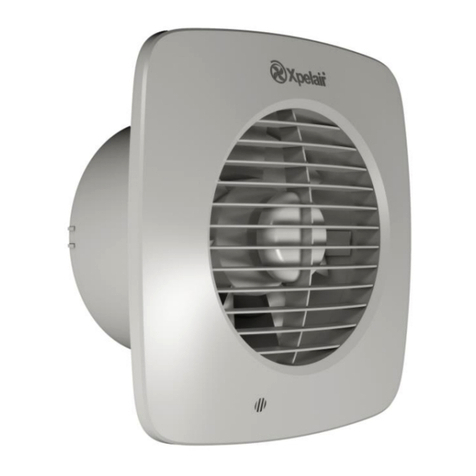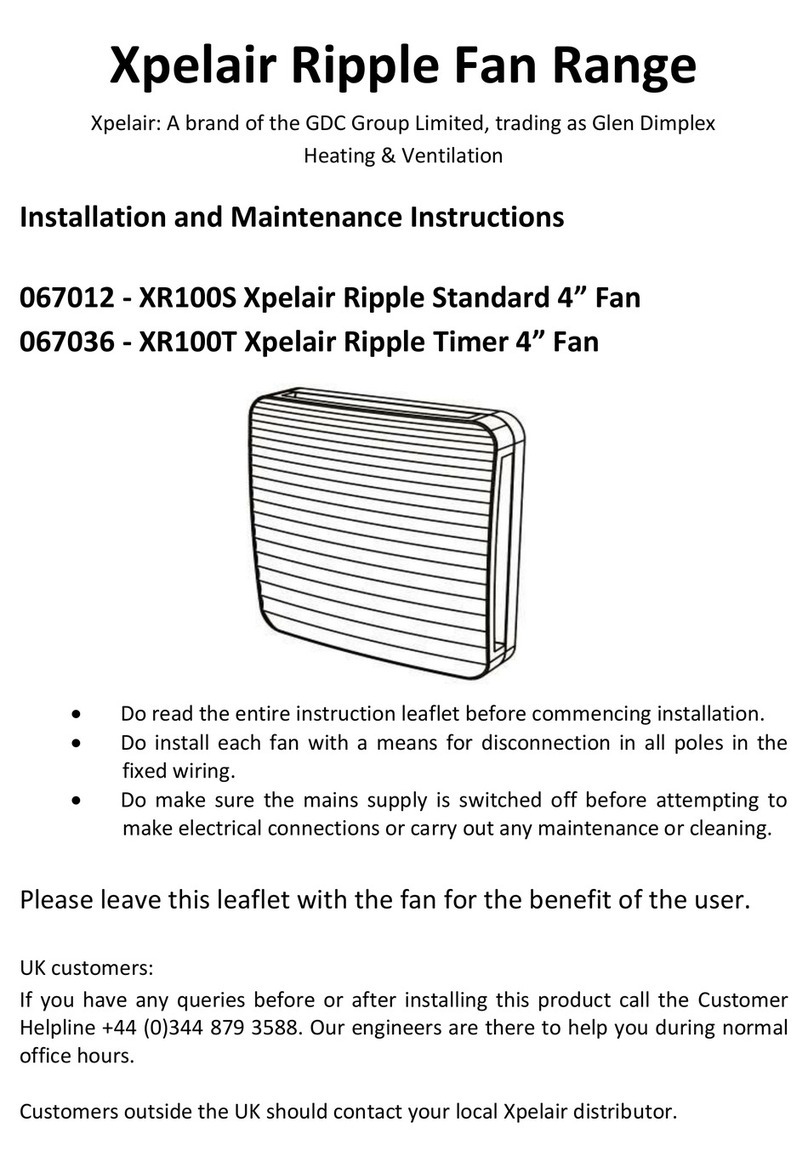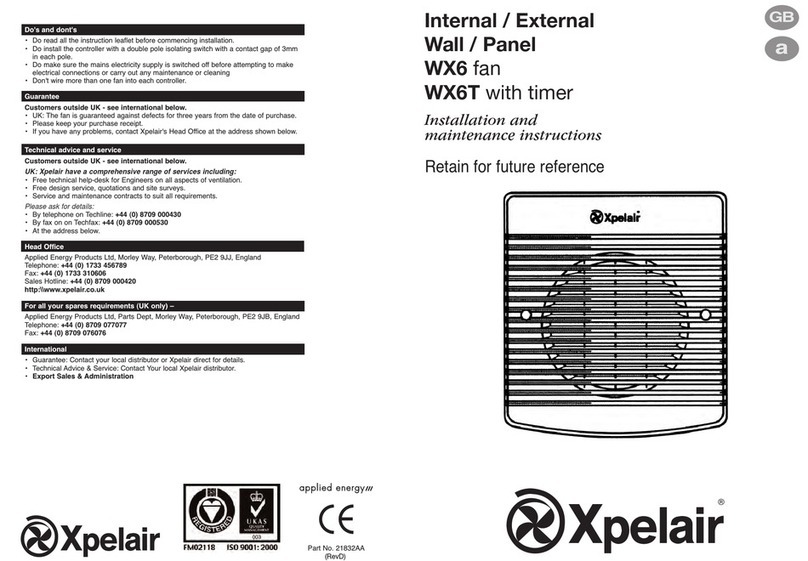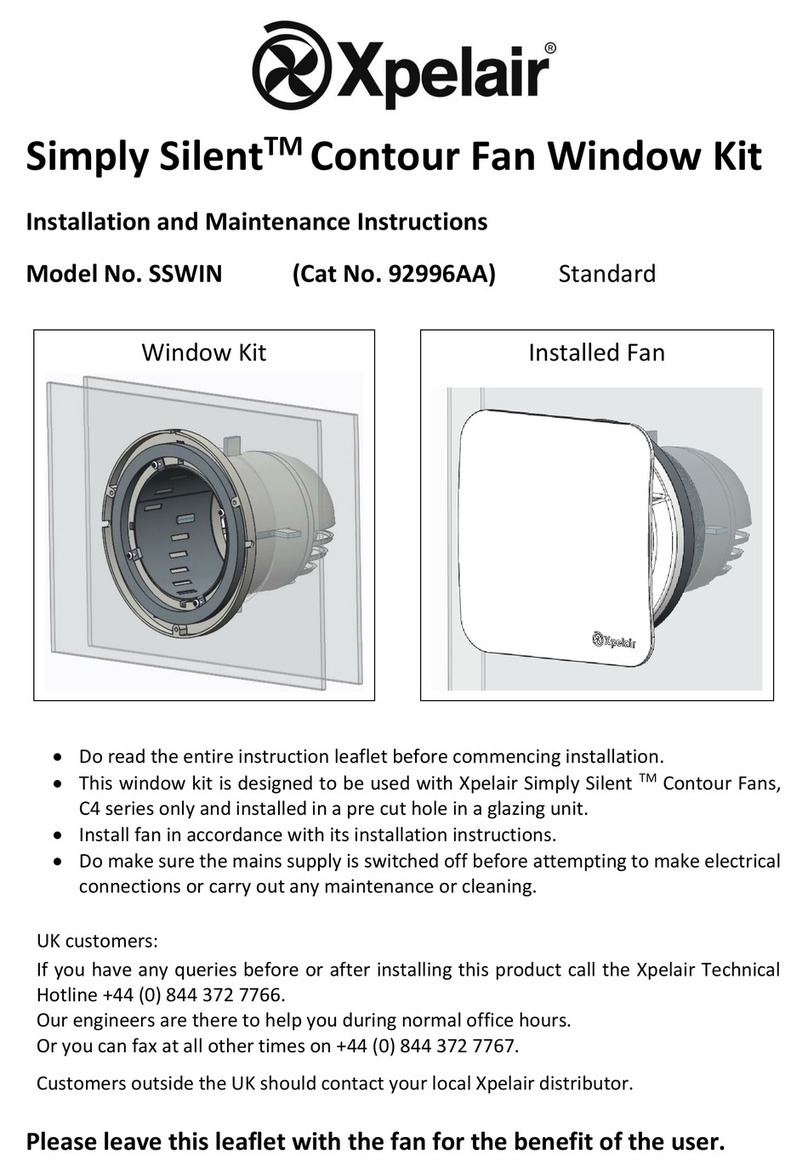
Section 1 –Important notes / Section 2 –Description of the Device
1.2.3 Start-up, use, interruption
The completed installation must be tested to ensure the unit works correctly. The user must read the User
manual in order to understand the procedures for use and maintenance.
WARNING:
The unit contains rotating fans. Do not put hands or fingers or any other objects into the unit or
ducting as this may cause injuries or damage to the unit.
1.2.4 Maintenance, repair, spare parts
In order to ensure continuous safe operation, the ventilation unit must be maintained regularly. Any
maintenance and repair work other than cleaning or changing filters must be carried out by a qualified
technician. Before opening the unit, turn off all associated circuits and secure against unintentional switching-
on. Use only original spare parts from the manufacturer.
1.2.5 Alterations and modifications
Always consult a qualified technician if any alterations or modifications to the unit or system are required.
Structural changes to the building can also have an effect on the ventilation system: Always consult a qualified
technician.
Section 2 –Description of the Device
2.1 Purpose
The unit is designed for controlled supply and exhaust ventilation of frost-free rooms within a building.
Model 180 Series is used for domestic properties with 1 kitchen and up to 3 additional wet rooms (K + 3).
Model 350 Series is used for domestic properties with 1 kitchen and up to 7 additional wet rooms (K + 7).
(“Wet rooms” include bathrooms, toilets, ensuites, etc).
The air flows through air ducts.
Connecting exhaust hoods to the ventilation system is not permitted. The unit is not to be used as a
dehumidifier.
2.2 Package contents
The unit is delivered with the following package contents:
• Ventilation unit with integrated control panel
• Condensate connection kit
• Installation manual and User manual
2.3 Operating principle
The unit is fitted with two fans using energy-saving “EC” technology which carries out a controlled air
exchange.
Used air is drawn in to the unit as Extracted air from the rooms with the highest air humidity and odour (e.g.
bathroom and kitchen) and is transferred to the outside as Exhaust air via a system of air ducts.
At the same time, a second duct system takes in Fresh air from outside the building and transfers it into living
rooms and bedrooms as Supply air.
Both air flows are completely separate and are passed through a heat exchanger which recovers the waste
heat from the extracted air to warm up the supply air. This ensures that the majority of heat energy is kept in
the building.
An internal bypass can be opened so that fresh air is supplied to the intake rooms without being warmed up
by the heat exchanger. Heat recovery is disabled in this case.
4



















































